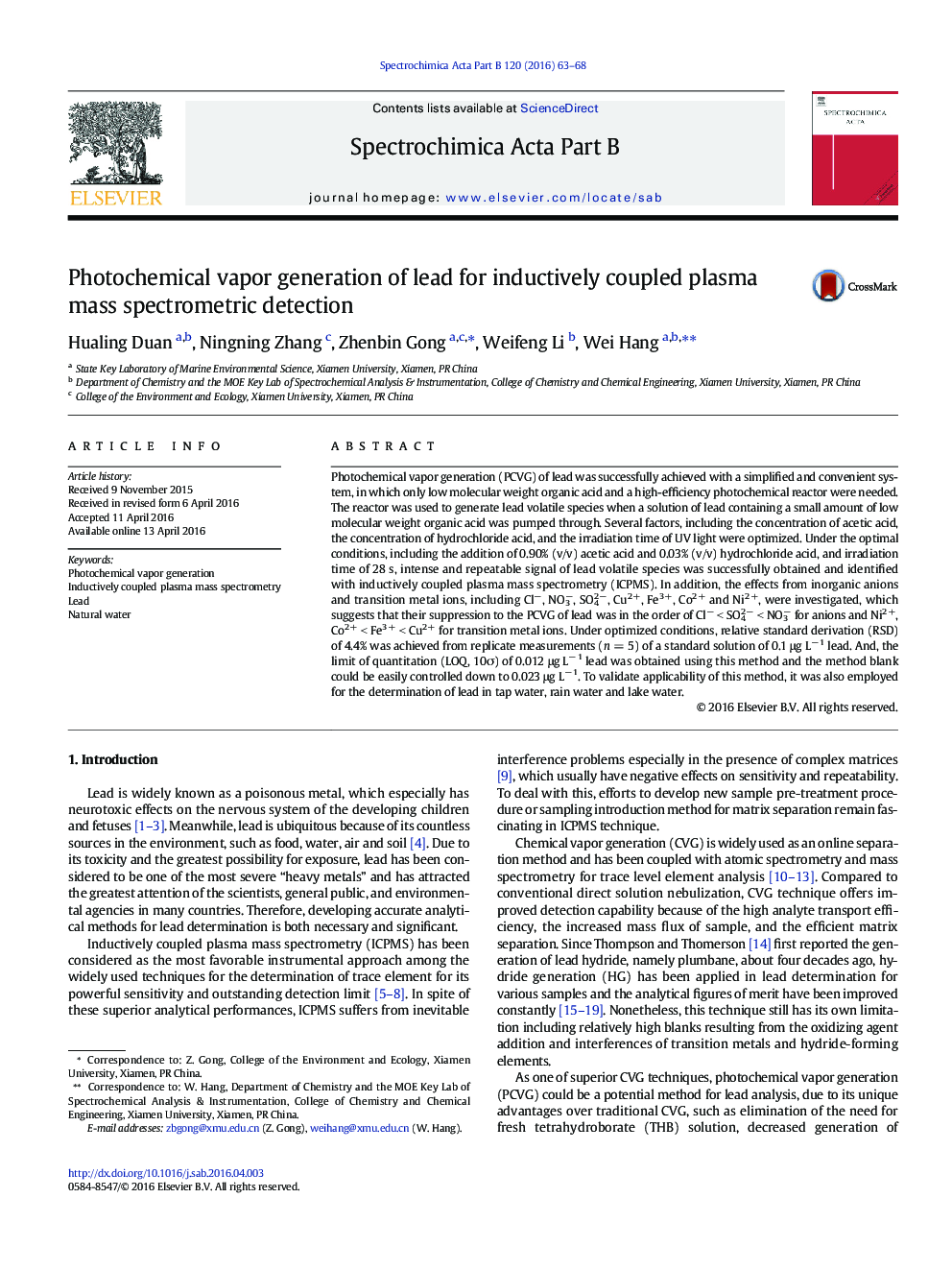| Article ID | Journal | Published Year | Pages | File Type |
|---|---|---|---|---|
| 1239662 | Spectrochimica Acta Part B: Atomic Spectroscopy | 2016 | 6 Pages |
•A simple and green method with PCVG technique was proposed for the Pb detection.•Only a small amount of acetic acid and a photochemical reactor were essential.•The method blank could be easily and strictly controlled at trace level.
Photochemical vapor generation (PCVG) of lead was successfully achieved with a simplified and convenient system, in which only low molecular weight organic acid and a high-efficiency photochemical reactor were needed. The reactor was used to generate lead volatile species when a solution of lead containing a small amount of low molecular weight organic acid was pumped through. Several factors, including the concentration of acetic acid, the concentration of hydrochloride acid, and the irradiation time of UV light were optimized. Under the optimal conditions, including the addition of 0.90% (v/v) acetic acid and 0.03% (v/v) hydrochloride acid, and irradiation time of 28 s, intense and repeatable signal of lead volatile species was successfully obtained and identified with inductively coupled plasma mass spectrometry (ICPMS). In addition, the effects from inorganic anions and transition metal ions, including Cl−, NO3−, SO42 −, Cu2 +, Fe3 +, Co2 + and Ni2 +, were investigated, which suggests that their suppression to the PCVG of lead was in the order of Cl− < SO42 − < NO3− for anions and Ni2 +, Co2 + < Fe3 + < Cu2 + for transition metal ions. Under optimized conditions, relative standard derivation (RSD) of 4.4% was achieved from replicate measurements (n = 5) of a standard solution of 0.1 μg L− 1 lead. And, the limit of quantitation (LOQ, 10σ) of 0.012 μg L− 1 lead was obtained using this method and the method blank could be easily controlled down to 0.023 μg L− 1. To validate applicability of this method, it was also employed for the determination of lead in tap water, rain water and lake water.
